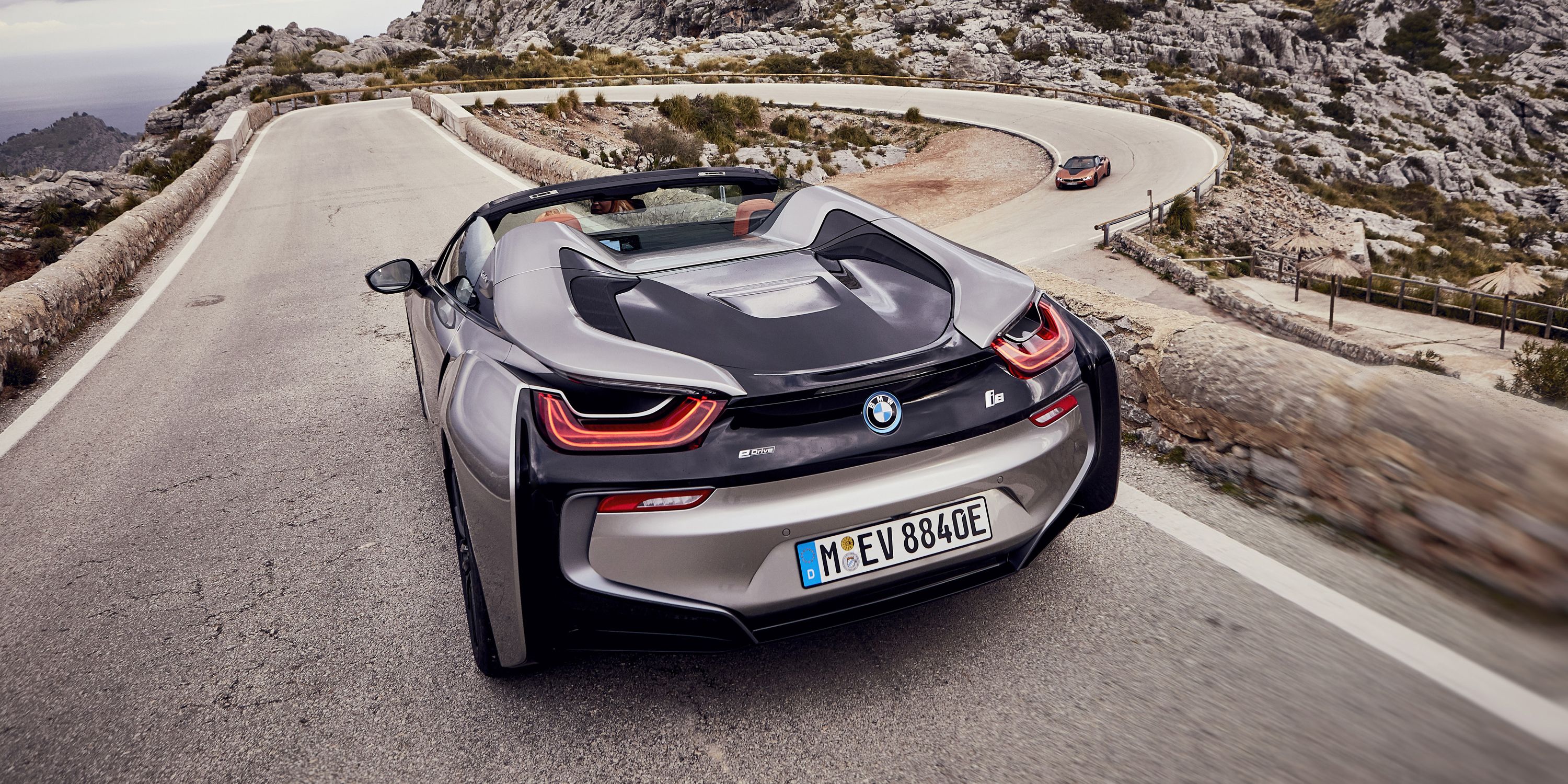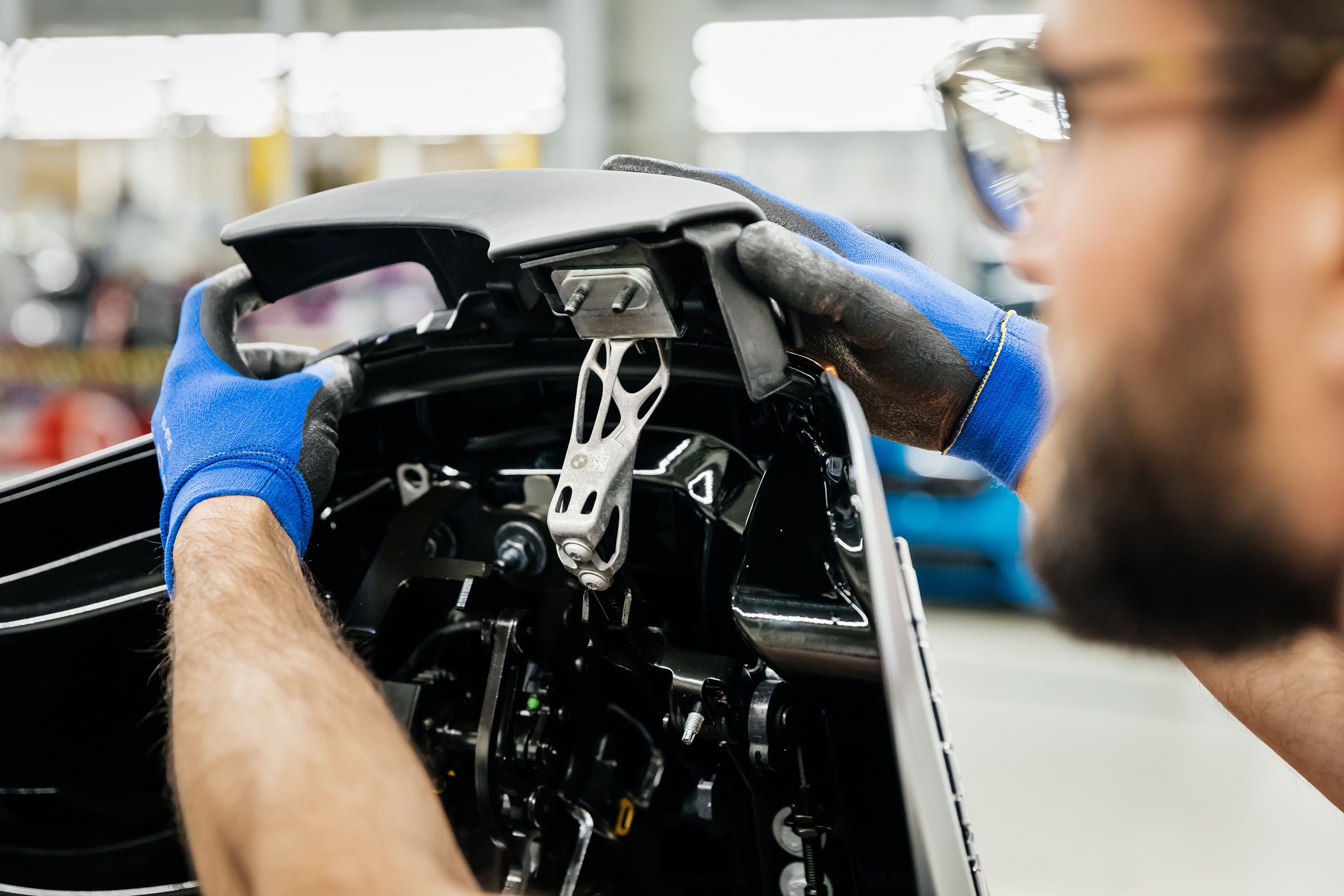BMW started experimenting with 3D-printing in 2010, when their DTM cars needed lightweight water pump pulleys. Parts made using additive manufacturing processes made it into series production two years later, when the Rolls-Royce needed various laser-sintered parts. The Goodwood factory must have been happy with the results, because since 2017, the fiber optic guide fixtures of the Dawn have also been 3D-printed. Today, Rolls-Royce uses a total of ten 3D-printed components throughout its lineup.
But you don’t need to spend Rolls-Royce money to get a piece of layered goodness: Mini’s custom indicator inlays and dashboard trim strips are also made this way, while for the i8 Roadster, BWW prints aluminum alloys.
Both a crucial part of the i8 Roadster’s roof mechanism and its window guard rails are made using this method. BMW says that the metal components weighs less than the injection-moulded plastic part would, while still being considerably stiffer. Using HP’s Multi Jet Fusion Technology, BMW can produce up to 100 window guide rails in 24 hours.
However, i8 Roadster sales are unlikely to make that necessary.
Source: Read Full Article


